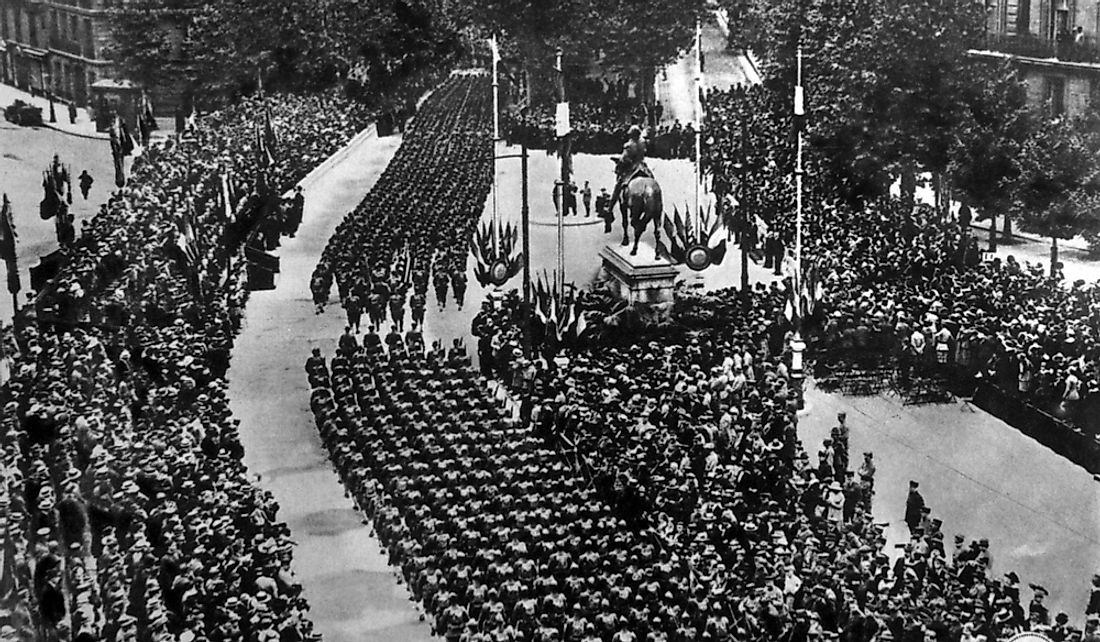Who Was President During World War I?

President Woodrow Wilson was the one who led America through World War I (1914-1918). Wilson served as President from 1913 to 1921 and oversaw the American entry into the war in 1917. The United States joined the Allied Powers by declaring war on Germany on April 6, 1917.
President Wilson
Woodrow Wilson was born in December 1856 in Staunton, Virginia. His teenage years were spent in Columbia, South Carolina and Augusta, Georgia. His father, Joseph Ruggles Wilson, was a Chaplain of the Confederate troops and also utilized his church as a medical center to treat injured members of the Confederate army. In 1879, Woodrow Wilson graduated at the College of New Jersey (currently Princeton University) and later joined the University of Virginia law school. Wilson then practiced law in Georgia. He is the only President of the United States who has ever received a PhD from Johns Hopkins University in 1886. He taught briefly at Wesleyan College and Bryn Mawr College before becoming a professor at Princeton. He was elected New Jersey's governor in 1910 where he got national fame as a reformer. In 1912 he was nominated for the presidency and selected Indiana's governor, Thomas Marshall, as his running mate.
US Involvement in World War I
When the war broke out in 1914 in the aftermath of the July Crisis, President Wilson initially advocated a neutral stance. Germany, however, claimed that his neutrality was a farce. Germany's suspicions were driven by the sale of weapons and allocation of loans to Britain, France, and Russia. President Wilson countered that Germany had the right to the same things, but since Britain controlled the sea such arrangements were not possible. He urged Germany to cease the unrestricted submarine warfare in waters off Britain. His first warning to Germany against "unfriendly" acts came after German submarines sunk the British ocean liner Lusitania leading to the death of 1,100 people, 128 of whom were Americans. In 1917, Germany continued its submarine attacks on ships including US merchant ships. The US also learned of the Zimmerman Telegram from Germany which tried to convince Mexico to join an alliance against the United States. When it was apparent that all ships approaching the British Isles could be attacked, President Wilson asked Congress to declare war in April 1917. His administration portrayed the war as the war to end all wars and one that was meant to preserve democracy. The United States joined to end the war and promote world peace with its participation helping to deliver victory to the Allies in November 1918 when an armistice was signed by Germany.
End of War and Achievements
When the war ended President Woodrow Wilson helped negotiate the Versailles Treaty and also helped form the League of Nations which was meant to prevent future wars by arbitrating international disputes. He also advanced the "14 points" that were to guarantee the freedom of the seas, ethnic minority self-rule in Europe, and a reduction of world army sizes. The United States however never joined the League of Nations due to opposition by Isolationist Republicans who were concerned that the League would limit the nation's autonomy and draw it into future war.











